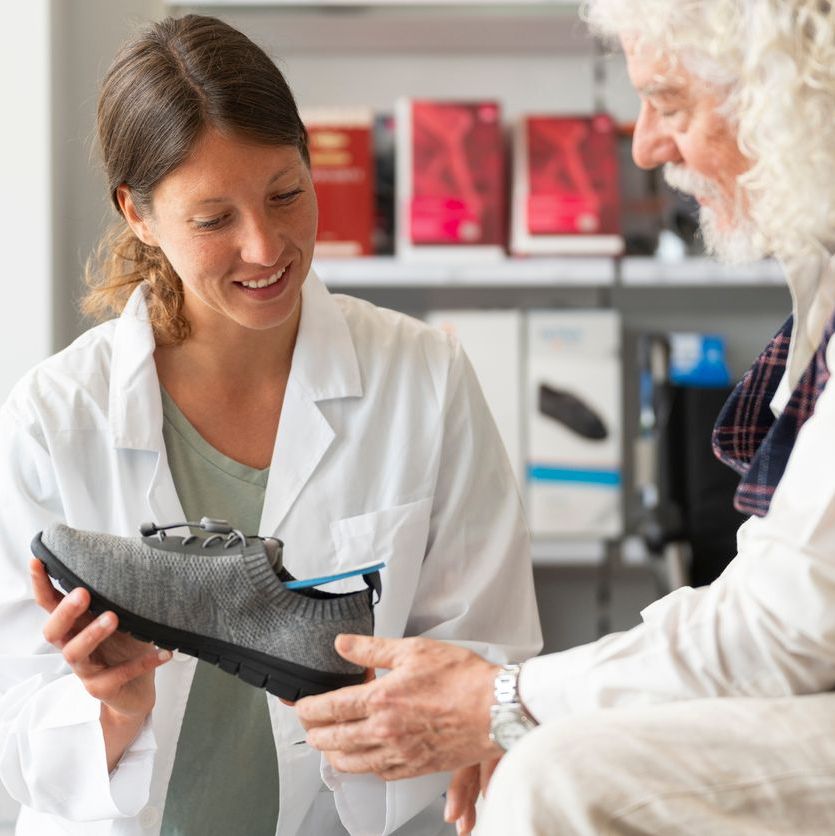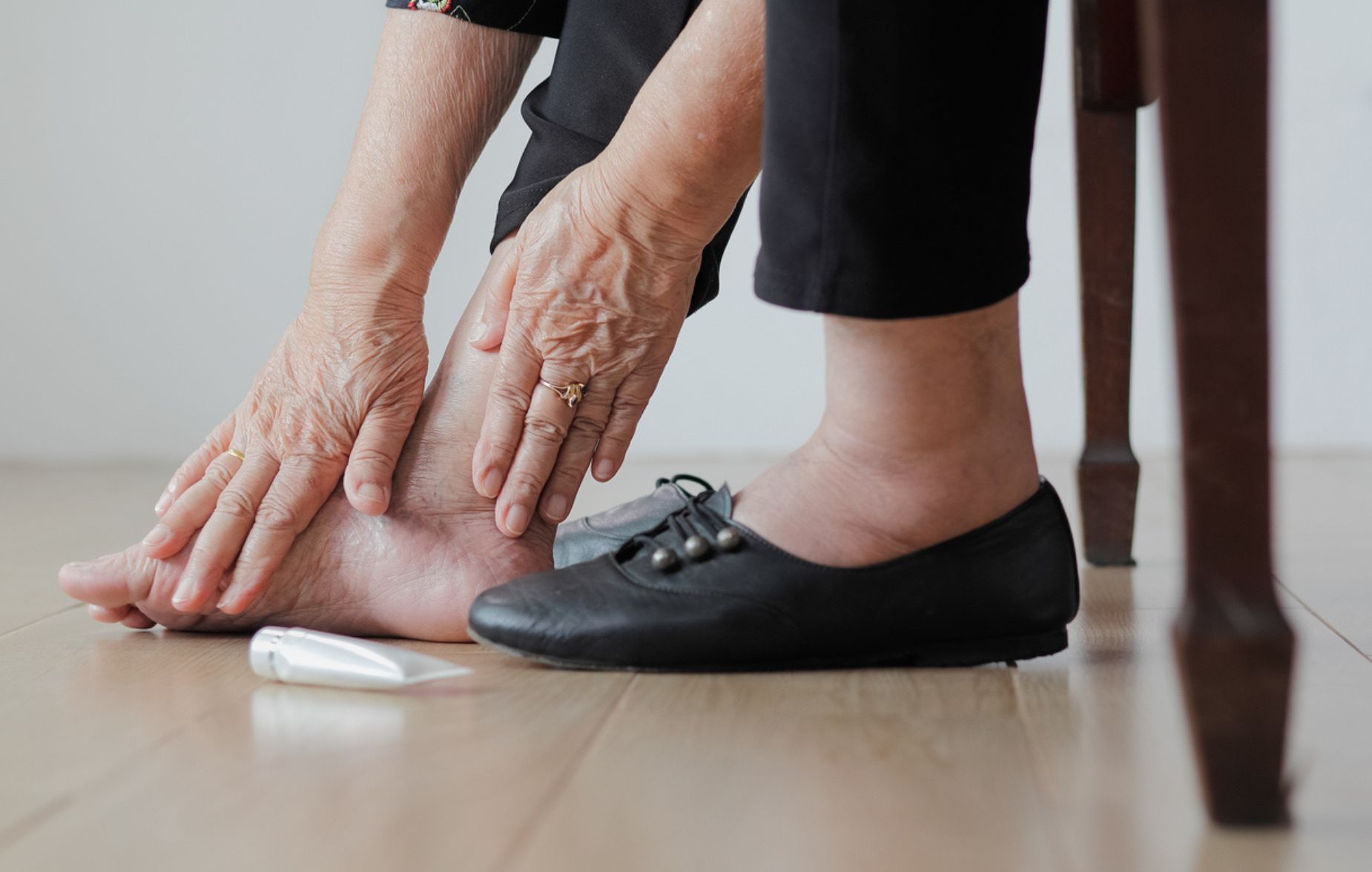For individuals with diabetes, foot health is an essential part of overall wellness. High blood sugar levels can affect circulation and nerve function, increasing the risk of complications like ulcers, infections, and even amputation. One of the simplest yet most effective ways to protect your feet is by wearing the right pair of diabetic shoes. These specially designed shoes can help prevent injuries, reduce pressure, and provide the support your feet need to stay healthy.
In this guide, we’ll explore why diabetic shoes are important, the key features to look for, and how to find the right pair for your needs.
Why Diabetic Shoes are Important

People with diabetes face unique challenges when it comes to foot health. Reduced blood flow can slow healing, while nerve damage (neuropathy) can make it difficult to feel injuries like cuts, blisters, or pressure sores. Without proper care, these minor issues can quickly develop into serious problems.
Diabetic shoes are specifically designed to:
- Reduce Pressure Points: By evenly distributing weight, these shoes minimize areas of high pressure that could lead to ulcers.
- Prevent Friction and Blisters: Seamless interiors and cushioned materials protect the feet from rubbing and irritation.
- Accommodate Foot Deformities: Diabetic shoes provide extra depth and width to comfortably fit swollen feet, bunions, or hammertoes.
- Improve Circulation: Proper fit and support promote healthy blood flow to the feet.
- Provide Stability: Enhanced support can improve balance and reduce the risk of falls.
Key Features of Diabetic Shoes
Not all shoes labeled as “diabetic” are created equal. When shopping for the right pair, look for the following features:
Wide Toe Box
A wide and deep toe box provides ample space for your toes, preventing crowding and reducing pressure on bunions, hammertoes, or other foot deformities.
Seamless Interior
Seams and rough stitching can cause irritation or blisters, especially for those with sensitive skin or neuropathy. Diabetic shoes are often made with smooth, seamless interiors to protect your feet.
Cushioned Insoles
Look for shoes with removable, cushioned insoles that provide support and reduce shock. Custom orthotics can also be added to further enhance comfort and protection.
Breathable Materials
Shoes made from breathable materials like leather or mesh help keep your feet dry and reduce the risk of fungal infections.
Extra Depth
Extra depth allows for added cushioning and accommodates swelling or the use of orthotics without creating pressure points.
Supportive Soles
Sturdy, non-slip soles improve stability and prevent falls, making them especially important for individuals with neuropathy or balance issues.
How to Choose the Right Pair of Diabetic Shoes
Finding the perfect pair of diabetic shoes involves more than just picking a pair that fits. Here are some steps to ensure you make the best choice:
1. Get a Professional Fitting
Feet can change over time due to swelling, weight fluctuations, or structural changes. Always have your feet measured by a professional before purchasing diabetic shoes. A proper fit should leave about a half-inch of space between your longest toe and the front of the shoe.
2. Consider Your Specific Needs
Every person’s feet are different, and your choice of diabetic shoes should reflect your unique requirements. If you have specific foot conditions like bunions, hammertoes, or plantar fasciitis, look for shoes that address these issues.
3. Test for Comfort
Walk around in the shoes to ensure they’re comfortable and supportive. Pay attention to any areas that feel tight, rub, or cause discomfort, as these can lead to problems over time.
4. Prioritize Quality Over Style
While it’s natural to want shoes that look good, functionality should be your top priority. Focus on quality materials and features designed to protect your feet, even if it means compromising on style.
5. Talk to Your Podiatrist
A podiatrist can recommend specific brands or styles based on your foot health needs. They can also provide custom orthotics or modifications to further improve the fit and function of your diabetic shoes.
Common Mistakes to Avoid
When choosing diabetic shoes, avoid these common pitfalls:
- Buying Without a Proper Fitting: Ill-fitting shoes can do more harm than good, even if they’re labeled as “diabetic.”
- Ignoring Material Quality: Low-quality materials may not provide the necessary support or protection.
- Skipping Regular Check-ins: Your foot health can change over time, so it’s important to reassess your shoe needs periodically.
Maintaining Your Diabetic Shoes
Once you’ve found the perfect pair, proper care is essential to ensure they last and continue to protect your feet:
- Clean Regularly: Wipe down your shoes with a damp cloth to remove dirt and bacteria.
- Replace Insoles as Needed: Over time, insoles can lose their cushioning and support.
- Inspect for Wear and Tear: Replace your shoes if they become worn out or lose their protective features.
When to See a Podiatrist
If you’re unsure about what type of diabetic shoes you need or are experiencing foot pain, it’s important to consult a podiatrist. They can assess your foot health, provide guidance on the best footwear for your needs, and recommend additional treatments if necessary.
At Sheehy Ankle & Foot Center, we specialize in diabetic foot care and can help you find the right shoes to protect your feet and enhance your comfort. Whether you’re shopping for your first pair or need an updated fit, our team is here to support you.
Take the First Step Toward Better Foot Health
Choosing the right pair of diabetic shoes can make a world of difference in protecting your feet and maintaining your mobility. If you’re ready to take control of your foot health, contact Sheehy Ankle & Foot Center today to schedule an appointment. We are here to help you find the perfect solution for your needs and ensure your feet stay healthy and comfortable.
